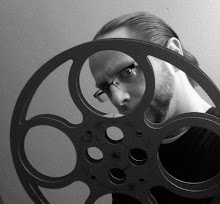Movie magic is something we all want to believe in when the
lights go down in the theatre and the silver screen lights up. We all want to
believe that Kong is really climbing the side of the building, that a man can
fly, and that a space station really is the size of a small moon. Part of the
fun of cinema is actually believing that
things are happening, and to know how something was done is a way of ruining
the illusion. But then the question has to be asked; what is more impressive,
the magic trick, or how the trick was done?
Since 1995, perhaps no other movie studio has pulled off
more magic than Pixar Animation Studios. Not only in the realm of computer
animation, but in storytelling, characters, and world-building. This year, the
famed animation studio took their show on the road with a travelling exhibit
entitled The Science Behind Pixar, in
which the curtain was drawn back from behind the magic stage.
This Blogger and his date were pleased to attend the exhibit
during its stop at the Franklin Institute in Philadelphia. Boasting over 13,000
feet of exhibition space covering two floors, the exhibit explored the math,
science, and computer-science that goes into the developmental process of
making a Pixar film. It takes attendees on a journey; from rough character
sketches by pencil on napkins to wireframes to the design of the worlds they
inhabit. It’s what Pixar calls their pipeline, and through interactive
displays, attendees can get a first-hand experience in creating a film.
Filmmaking, like any other creative endeavor, happens in
steps. The exhibit takes attendees through each step from sketches to fully
realized characters in the computer capable of more facial expressions than a
human being has. The interactive displays are designed for both adults and kids
to have fun and learn with; the controls were easy and well-labeled for the
little cowpokes to have fun with making computer images of characters make
funny faces, while adults were schooled in how basic filmmaking works…learning
principals such as camera angles, lighting, and rendering images.
The exhibit knows its audience. Anyone attending most
certainly has at least a good familiarity with Pixar’s catalog of films (or why
else would they be there?), and the exhibit uses examples from every Pixar film to demonstrate their
movie-making technique. CARS (2006) demonstrated their ability to create
reflective surfaces, while MONSTERS INC. (2001) and BRAVE (2012) showed how fur
and hair are created and manipulated. UP (2009) was used to show off lighting
and the math/science required for creating colors (the equations behind every pixel
was mind-boggling), while INSIDE OUT (2015) showed us how characters are made
to move. And while there was a lot to learn, there was still plenty of time for
fun…as full-sized models of beloved characters were around for kids and big
kids to pose with.
The question of the magic trick being more impressive than
the secret is still unanswered. For this Blogger, knowing the secrets behind
Pixar’s magic makes the feat all the more impressive. The biggest takeaway from
The Science Behind Pixar is the focus
on the people behind the scenes which make it all happen. Pixar’s films and their
peers are often dismissed because they’re done with computers instead of pen
and ink, but the point that is often missed is that those computers are being
manipulated by human hands, which
means the magic is nothing without the right hands waving the wands. Movie
magic is real, and as this Blogger and his date experienced, can turn an adult
into a kid with a simple wink.
*
Learn more about the exhibit HERE
Read Reel Speak’s Top 5 ranking of Pixar’s Films HERE




No comments:
Post a Comment
A few rules:
1. Personal attacks not tolerated.
2. Haters welcome, if you can justify it.
3. Swearing is goddamn OK.